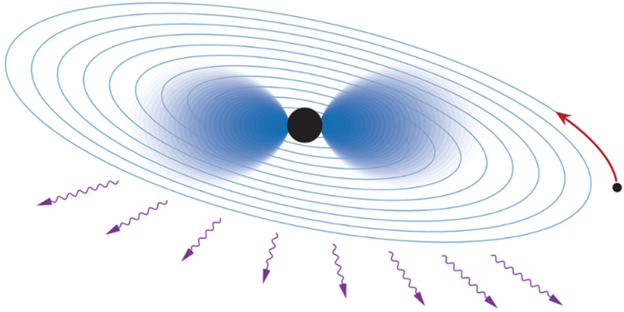Finding New Particles Around Black Holes
Ultralight particle clouds can form around rotating black holes. Physicists from the University of Amsterdam and Harvard University now show that these clouds would leave a characteristic imprint on the gravitational waves emitted by binary black holes.
Science generally teaches us that black holes swallow all forms of matter and energy surrounding them, but they can shed some of their mass through a process called superradiance.
Mass extracted from a black hole via superradiance forms a large cloud around the black hole, creating a so-called gravitational atom. Despite the immensely larger size of a gravitational atom, the comparison with sub-microscopic atoms is accurate because of the similarity of the black hole plus its cloud with the familiar structure of ordinary atoms, where clouds of electrons surround a core of protons and neutrons.
Researchers studied the gravitational equivalent of the so-called ‘photoelectric effect.’ In this well-known process, which for example, is exploited in solar cells to produce an electric current, ordinary electrons absorb the energy of incident particles of light and are thereby ejected from a material – the atoms ‘ionize’. In the gravitational analog, when the gravitational atom is part of a binary system of two heavy objects, it gets perturbed by the presence of the massive companion, which could be a second black hole or a neutron star. Just as the electrons in the photoelectric effect absorb the energy of the incident light, the cloud of ultralight particles can absorb the orbital energy of the companion so that some of the cloud gets ejected from the gravitational atom.
The team demonstrated that this process might dramatically alter the evolution of such binary systems, significantly reducing the time required for the components to merge with each other. Moreover, the ionization of the gravitational atom is enhanced at very specific distances between the binary black holes, which leads to sharp features in the gravitational waves that we detect from such mergers.

